Why Is Patrilineal the Best Way to Trace Family Lineage?
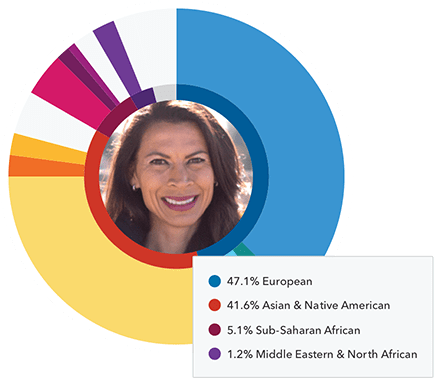
Nosotros are reinventing the way you meet your beginnings — through science.
Your DNA can tell you lot more
virtually your family history.
add to cart add to cart USD$99
Nosotros are reinventing the way you run into your ancestry — through scientific discipline.
Your Deoxyribonucleic acid can tell y'all more
about your family unit history.
add to cart add to cart USD$99

Discover more than about your Dna story.
More regions. More connections. More ways to discover what makes you, you.
Feel your ancestry in a
whole new fashion.
Click to explore our service below.
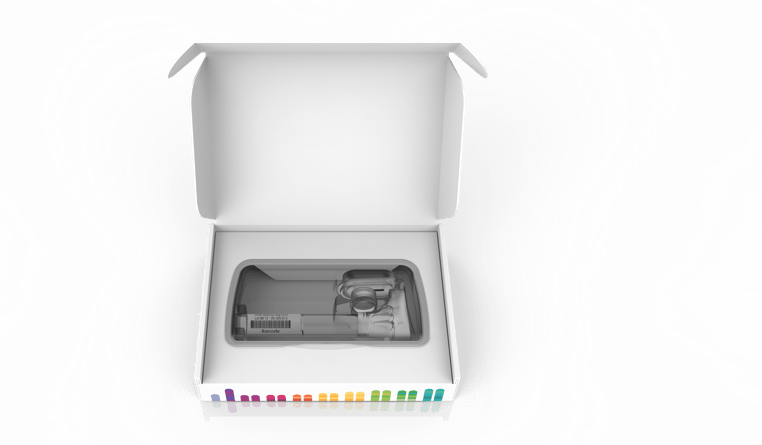
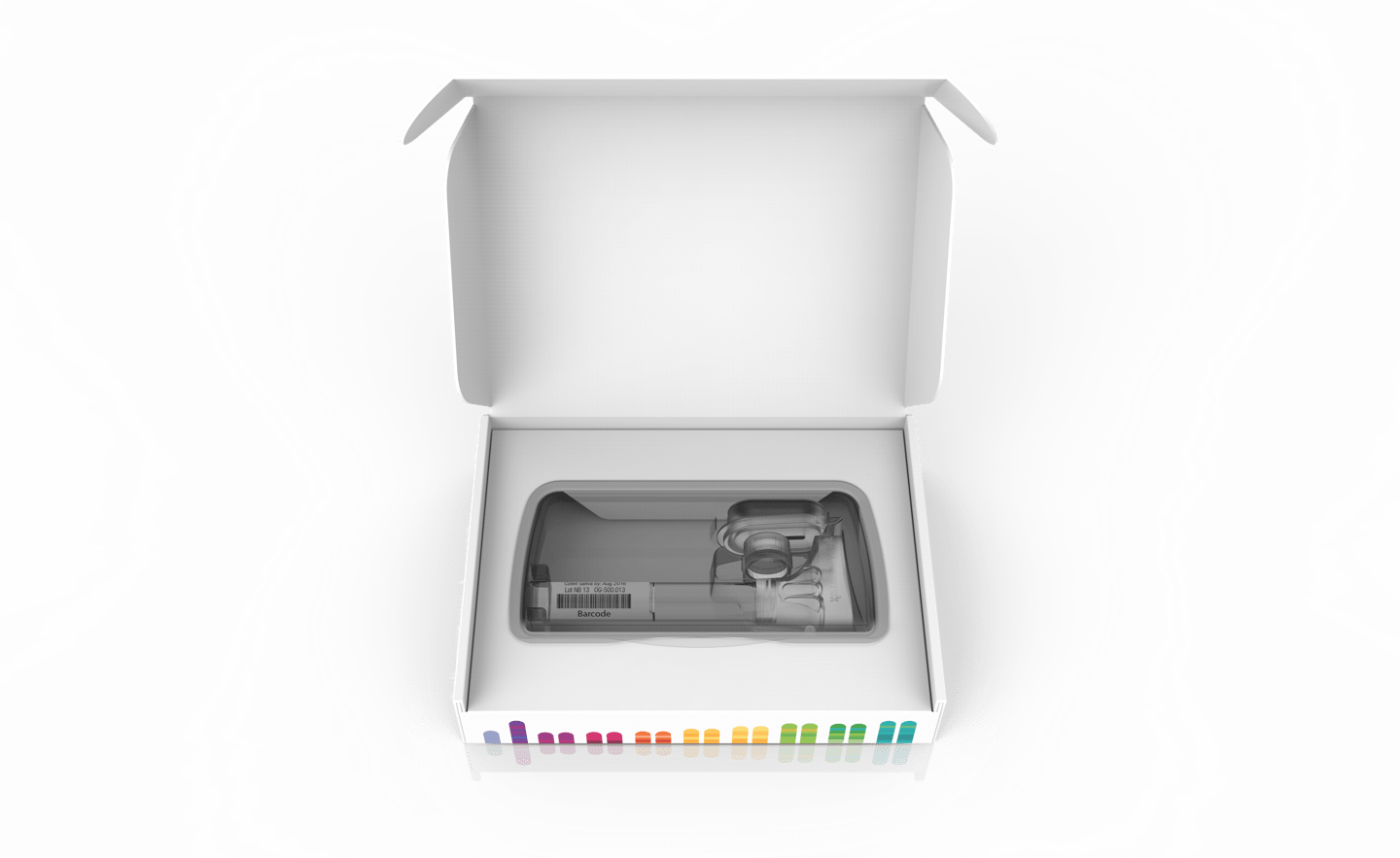
Now with 2000+ regions Ancestry Limerick
Discover where your DNA is from out of 2000+ regions worldwide - and more.
Learn more
Family Tree
Our Ancestry + Traits Service now includes our new automatic family tree builder.
DNA Relative Finder
Opt-in to connect with people who share Dna with you - and bulletin them.
Learn more

Trait reports
Learn how your Deoxyribonucleic acid influences your facial features, gustatory modality, olfactory property and other traits.
Learn more than
Maternal & Paternal Haplogroups
Trace parts of your ancestry to a specific group of individuals from one,000+ years ago.
Larn more
Neanderthal Ancestry
Find how much Neanderthal Deoxyribonucleic acid you inherited.
Larn more

Now with 2000+ regions
Beginnings Composition
Run across how your DNA breaks out across our 2000+ regions worldwide.
- Acquire nigh your bequeathed origins.
- See where your ancestors lived 500+ years agone.
- Use your Dna findings to travel to the places that make you, y'all.
Acquire more
Ancestry Composition
- Larn about your ancestral origins.
- Meet where your ancestors lived 500+ years ago.
- Use your Deoxyribonucleic acid findings to travel to the places that make you lot, you.
Family Tree
- You don't have to be a genealogist to build your family unit tree.
- Automatically start your family tree using your DNA.
DNA Relative Finder
Opt-in to connect with people who share Deoxyribonucleic acid with you - and message them.
- Discover Dna relatives from around the globe.
- Choose to bulletin and meet relatives - maybe fifty-fifty hear new family stories, share photos and become a ameliorate understanding of your family unit's history.
Learn more

Trait reports
- Our Ancestry + Traits Service includes 30+ trait reports at no boosted price.
- Compare your results to other 23andMe customers.
Learn more
Maternal & Paternal Haplogroups
Trace parts of your ancestry to a specific group of individuals from 1,000+ years agone.
- Understand how the migration of our Deoxyribonucleic acid tells the story of your ancestors.
- Larn the origins of your maternal and paternal* ancestors.
*Women tin can but trace their paternal haplogroup by connecting to a male relative — such equally a male parent, brother or paternal male cousin.
Acquire more than
Neanderthal Ancestry
Detect how much Neanderthal Dna you inherited.
- Detect out how much of your Dna is derived from Neanderthals.
- See how your Neanderthal limerick compares to others.
- Larn which traits your Neanderthal DNA is associated with, similar height and back hair.
Acquire more
Feel your ancestry in a
whole new way.
Click to explore our service below.
Ancestry Composition
Haplogroups
Neanderthal Ancestry
DNA
Relatives
Run into how your DNA breaks out beyond our 2000+ regions worldwide.
- Learn nearly your ancestral origins
- See where your ancestors lived 500+ years ago
- See how each of your biological parents contributed to your Ancestry Limerick (characteristic available when connected with 1 genotyped parent).
Acquire more
Trace parts of your beginnings to a specific grouping of individuals from ane,000+ years ago
- Understand how the migration of our DNA tells the story of your ancestors
- Acquire the origins of your maternal and paternal* ancestors
- Women tin can only trace their maternal haplogroup
Larn more
Explore genetic similarities and differences betwixt you lot and your relatives
- See how different ancestries have traveled through generations of your family.*
- Requires relatives to be genotyped
- Share reports with family and friends (even if they are not customers!)
Discover how much Neanderthal Deoxyribonucleic acid yous inherited!
- Notice out how much of your DNA is derived from Neanderthals
- See how your Neanderthal composition compares to others
- Acquire which traits your Neanderthal Dna is associated with, similar height and back pilus
Learn more
Opt-in to connect with people who share DNA with you - and message them!
- DNA Relatives carousel copy
- Discover Deoxyribonucleic acid relatives from around the world
- Choose to bulletin and run across relatives - maybe even hear new family stories, share photos and become a better agreement of your family's history
Acquire more
76-year-old woman finds
her nascence family after
a forty-year search
Play video
Where in the earth is your Dna from?
Your DNA can tell you where your ancestors lived more than 500 years ago. Explore your ancestry's breakdown by region, including E Asia, Sub-Saharan Africa and Europe, with results becoming more refined as our database continues to grow.
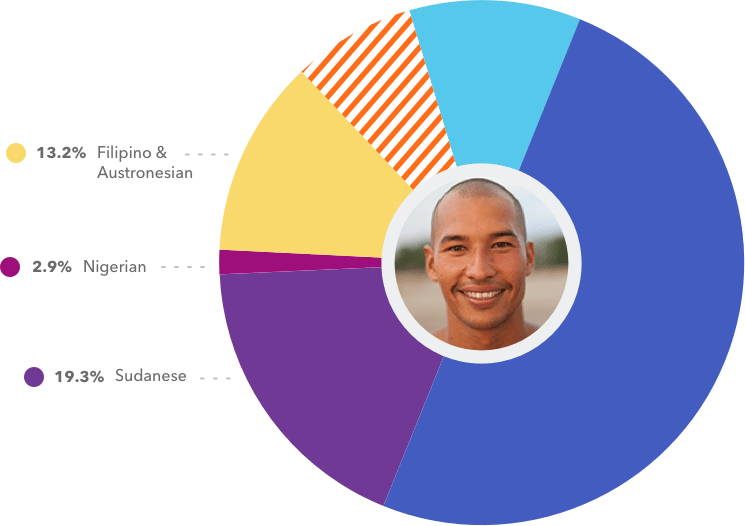

Trait Reports
30+ reports
Find out your likelihood of having certain characteristics. See how your DNA affects your hair color, sense of taste preferences and more. You lot can also compare your results to other 23andMe customers.
Reports include
- Pilus: Color, Curliness, Male person Bald Spot
- Sense of taste & Smell: Sweet vs. Salty, Bitter
- Facial Features: Cheek Dimples, Unibrow, Freckles
- Run into all traits
Take a closer look at a study.
Overview
Encounter how likely you are to accept the trait and how your prediction compares to other groups.
About the trait
Acquire how the trait develops, how it evolved and other contributing factors.
Take activeness
Take the next step by sharing, comparing or learning more than near your results.
What if you could travel there?
Learn more about how you can embark on a DNA travel adventure based on your 23andMe Ancestry Composition results.
Your Ancestry Timeline
Traced through the generations
Observe when dissimilar ancestries were introduced into your DNA. Learn how many generations agone you had an ancestor that was descended from a single population or ethnicity.
A new social network, with a genetic twist.
Explore your DNA Family! Nosotros all have our immediate, biological or adopted families...simply did you know you lot could also share DNA with other 23andMe customers - your Deoxyribonucleic acid Relatives?
With this unique (and anonymous) report, see how many Deoxyribonucleic acid Relatives you have around the earth - or here in the US! View all the places your DNA Relatives phone call dwelling.
And if you lot desire to dig deeper, you can opt-into our Deoxyribonucleic acid Relatives tool to find, connect and message those who share Dna with yous.
Find DNA relatives beyond the globe or across the street.
Find other 23andMe customers who share your Deoxyribonucleic acid and ancestors. Explore matches that range from close family to distant relatives and make new connections. Shed new light on your family story past discovering a new relative nearby or somewhere around the world. You tin can always cull to opt in or out of this tool.
The difference is in our DNA
Some of our well-nigh innovative ancestry features that permit you drill down into the details:
- Inheritance Tracing: Trace how certain populations were passed down through dissimilar generations – which is more interesting if you have family members in the database
- Ancestry percentages to the 0.1%: We provide estimates of your ancestry percentages down to the 0.one%, and nosotros also give yous the pick to explore results with different conviction levels
- Breakdown of ancestry: See how your DNA breaks out beyond our 2000+ regions worldwide
- Compare Deoxyribonucleic acid Relatives' segments: In the Deoxyribonucleic acid Relatives tool, meet overlapping chromosome segments between you and your matches and compare them with up to 5 other matches at a fourth dimension to assist you triangulate new relatives for your family tree
Map your beginnings.
Go farther back.
Notice the origins of your maternal (your mother's female parent's female parent's…) and paternal (your father's father's father'due south…) ancestors and how they moved around the earth over thousands of years.
We report on your maternal and paternal lineage by identifying your haplogroups. A haplogroup can trace office of your beginnings back to a specific group of individuals in the distant past.
Women can only trace their maternal haplogroup. This is because the paternal haplogroup is traced through the Y chromosome, which women do not inherit.
Information for women 
More than on: results for women.
The vast majority of our features, including the Ancestry Composition written report and DNA Relatives tool, are based on autosomal Deoxyribonucleic acid. Autosomal Dna is inherited from both parents, and women receive all these reports and tools.
While men can trace both their maternal haplogroup (from mitochondrial Deoxyribonucleic acid) and their paternal haplogroup (through the Y chromosome passed down from their father), women can only trace their maternal haplogroup (through the mitochondrial Deoxyribonucleic acid passed down from their female parent). This is because the paternal haplogroup is traced through the Y chromosome, which women practice not inherit.
Keep in mind that haplogroups are one small part of your beginnings analysis. If a male relative such as your father, brother, paternal uncle or paternal male cousin were genotyped, your own paternal haplogroup information could be inferred from any of them.

Find out if y'all're a little bit Neanderthal.
Even though Neanderthals vanished most twoscore,000 years agone, their DNA lives on in us. Research tells us that they interbred with humans around 60,000 years ago.
23andMe can tell you how much of your DNA is derived from Neanderthals and how that compares to others. We tin can even betoken to specific Neanderthal Dna that is associated with traits that y'all might have – like meridian and dorsum hair.
Hi. Yet take questions about our ancestry features?
Here are merely a few of the things people frequently ask about 23andMe.
If you don't see your question here, make it affect with us.
Some beginnings services are records-based, which means that they help you search historical records such as birth, death and marriage certificates, to trace your lineage. 23andMe offers genetics-based ancestry reports and tools, which means that we clarify your DNA to trace your lineage.
With 23andMe, you can look deeper into your personal history to learn what percentage of your Dna comes from populations around the world, find your Dna relatives, larn almost your maternal and paternal lineages and even see how much of your DNA comes from Neanderthals.
The 23andMe DNA database has more than five million genotyped customers worldwide. Yous volition proceed to find new relatives as our database grows over time.
Many people benefit from finding new family members – from those who fill in details of their family copse to adoptees finding their biological family.
If yous opt in to Dna Relatives, you volition be able to transport and receive invitations to connect with other customers who share DNA with you. You can cull whether to answer to these invitations or not, and your DNA relatives have the same choice. We cannot guarantee that they volition respond to your sharing invitations or messages. Regardless of whether you both agree to share, you will be able to see their birthplace, locations of their ancestors and surnames, if they have called to add this information to their contour. If you lot both accept sharing invitations, you will be able to see beginnings reports and overlapping chromosome segments.
In rare cases, participation in Dna Relatives may reveal that you are related to someone unexpected, or that you lot are not related to someone in the mode that you expected. Consider this before you opt in to this characteristic.
Your ancestry results are based on a few different types of Deoxyribonucleic acid—DNA inherited from both of your parents (chromosomes i-22), Y chromosome DNA and mitochondrial Dna.
DNA that you inherit from both parents is called autosomal DNA. Since you inherit approximately half of this type of Dna from each parent, information technology reflects recent ancestry from both sides of your family tree. The vast majority of our features, including our Ancestry Limerick report and DNA Relatives tool, are based on autosomal Deoxyribonucleic acid.
Haplogroups are a dissimilar story. Your maternal line haplogroup consignment is derived from a separate piece of DNA called the mitochondria. Since mitochondria is passed on only by mothers to their children, your maternal line haplogroup assignment only tells you nearly your mother'south side of the family. Similarly, the paternal line haplogroup assignment is derived from a different, separate piece of Dna called the Y chromosome. The Y chromosome is only passed from fathers to sons and just traces the paternal line.
Haplogroups are mainly used for doing anthropological research of time frames long before the adoption of surnames. Haplogroups are simply pointers to a big geographic area of the world where that haplogroup is plant in high frequency.
Some genetic ancestry services only provide autosomal DNA analysis or charge you separately for the maternal and paternal haplogroup data. 23andMe includes all of these for a single price.
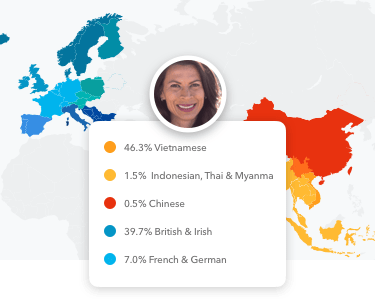
Discover more virtually
your DNA story.
More regions. More connections. More ways to detect what makes you, you.
Ancestry + Traits Service
USD$99

Ancestry Limerick
Find where your Dna is from out of 2000+ regions worldwide - and more.
Your DNA can tell you lot where your ancestors lived more than 500 years ago. Explore your ancestry'south breakdown by region, including Eastern asia, Sub-Saharan African and Europe, with results becoming more refined every bit our database continues to grow.
What if you could travel in that location? Larn more about how you can commence on a DNA travel hazard based on your 23andMe Ancestry Composition results.

Trait reports
Learn how your Dna influences your facial features, sense of taste, smell and other traits.
30+ reports
Find out your likelihood of having certain characteristics. Run into how your DNA affects your pilus color, taste preferences and more. Yous tin can as well compare your results with other 23andMe customers.
Reports included
- Hair: Color, Curliness, Male Bald Spot
- Sense of taste & Odor: Sweet vs. Salty, Bitter
- Facial Features: Cheek Dimples, Unibrow
- sample report
- Ability to Match Musical Pitch
- Asparagus Odour Detection
- Back Hair (available for men just)
- Bald Spot (available for men simply)
- Bitter Taste
- Bunions
- Cheek Dimples
- Cilantro Taste Aversion
- Cleft Chin
- Dandruff
- Earlobe Type
- Early Hair Loss (available for men only)
- Earwax Type
- Eye Color
- Fear of Heights
- Fear of Public Speaking
- Finger Length Ratio
- Flat Feet
- Freckles
- Hair Photobleaching (pilus lightening from the sun)
- Hair Texture
- Pilus Thickness
- Ice Cream Flavour Preference
- Light or Night Pilus
- Misophonia (hatred of the audio of chewing)
- Mosquito Bite Frequency
- Motility Sickness
- Newborn Hair
- Photic Sneeze Reflex
- Red Hair
- Skin Pigmentation
- Stretch Marks
- Sugariness vs. Salty
- Toe Length Ratio
- Unibrow
- Wake-Upwardly Time
- Widow's Top

Deoxyribonucleic acid Relative Finder
Connect with people who share Dna with you.
Find other 23andMe customers who share your Deoxyribonucleic acid and ancestors. Explore matches that range from shut family to distant relatives and make new connections. Shed new calorie-free on your family story by discovering a new relative nearby or elsewhere around the earth. You can always choose to opt in or out of this tool.
Expand content
Maternal & Paternal Haplogroups
Trace parts of your beginnings to a specific group of individuals from i,000+ years ago
Notice the origins of your maternal (your mother's mother'due south mother's…) and paternal (your begetter's father'southward father'southward…) ancestors and how they moved around the world over thousands of years.
We study on your maternal and paternal lineage by identifying your haplogroups. A haplogroup tin can trace part of your ancestry back to a specific grouping of individuals in the distant by.
Women can only trace their maternal haplogroup. This is because the paternal haplogroup is traced through the Y chromosome, which women do not inherit.
More than about results for women
The vast bulk of our features, including the Ancestry Limerick written report and DNA Relatives tool, are based on autosomal Dna. Autosomal Deoxyribonucleic acid is inherited from both parents, and women receive all these reports and tools.
While men tin can trace both their maternal haplogroup (from mitochondrial Deoxyribonucleic acid) and their paternal haplogroup (through the Y chromosome passed downwards from their father), women can simply trace their maternal haplogroup (through the mitochondrial DNA passed downward from their mother). This is because the paternal haplogroup is traced through the Y chromosome, which women do not inherit.
Go along in mind that haplogroups are one small role of your ancestry assay. If a male person relative such as your father, brother, paternal uncle or paternal male cousin were genotyped, your ain paternal haplogroup information could be inferred from any of them.

Neanderthal Ancestry
Discover how much Neanderthal DNA you inherited
Fifty-fifty though Neanderthals vanished nearly 40,000 years agone, their DNA lives on in us. Inquiry tells us that they interbred with humans effectually lx,000 years ago.
23andMe can tell you how much of your Dna is derived from Neanderthals and how that compares to others. We tin can fifty-fifty point to specific Neanderthal DNA that is associated with traits that you lot might take – like height and back hair.
Raw data included 
Raw data is for information purposes simply; must not be used for medical or diagnostic purposes.
Source: https://www.23andme.com/en-int/dna-ancestry/
Postar um comentário for "Why Is Patrilineal the Best Way to Trace Family Lineage?"